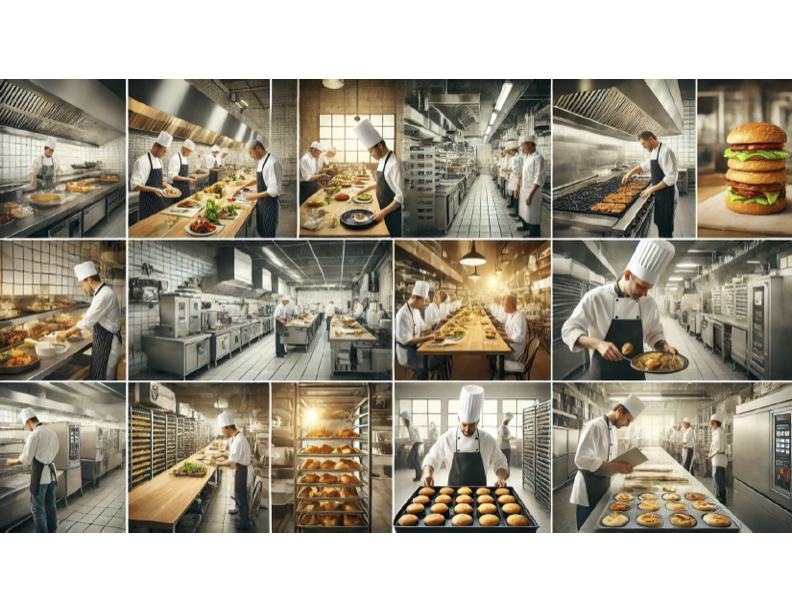Not all commercial kitchens are created equal. Depending on the business model, space, and service style, kitchens can vary wildly in design and function. If you're planning a food business—or just curious—knowing the different types can help you understand how the industry works behind the scenes.
Here’s a breakdown of the main types of commercial kitchens:
1. Restaurant Kitchen
This is the most common setup. It’s designed to support a full-service dining experience, with multiple stations like grill, sauté, prep, salad, and dessert. Each station has specific equipment, and the kitchen layout is usually customized to the restaurant’s menu and service speed. These kitchens are often busy, fast-paced, and built for high volume during peak hours.
Best for: Full-service restaurants, bistros, and cafes.
2. Ghost Kitchen (Cloud Kitchen)
A ghost kitchen operates without a dining area. It’s built purely for delivery and sometimes takeout. These kitchens are optimized for speed, efficiency, and online order fulfillment. Often, a single space hosts multiple brands under one roof.
Best for: Delivery-only brands, virtual restaurants, and food entrepreneurs looking to reduce overhead costs.
3. Commissary Kitchen
Commissary kitchens are shared spaces rented by multiple food businesses. They’re licensed and equipped to meet health code requirements, making them a go-to for food trucks, caterers, or small startups that don’t need their own kitchen yet.
Best for: Food trucks, meal prep services, caterers, and small-batch producers.
4. Catering Kitchen
These kitchens are designed to prep and stage food for off-site events. Unlike a restaurant kitchen, there's no need for plating or customer-facing areas. Storage, prep space, and equipment for large-batch cooking are key.
Best for: Catering companies, wedding/event food services, and mobile dining businesses.
5. Hotel or Institutional Kitchen
Think large-scale operations: hotels, hospitals, schools, or corporate cafeterias. These kitchens are built to serve hundreds or thousands of meals a day. They focus on consistency, safety, and volume. Multiple production lines, industrial-grade equipment, and tight scheduling are the norm.
Best for: Institutions that serve food daily at scale.
6. Food Truck Kitchen
A mobile kitchen squeezed into a vehicle. Every inch counts. The setup is tight but efficient, with equipment tailored to the menu. Regulations vary by location, so food truck owners often use commissary kitchens for additional prep and storage.
Best for: Entrepreneurs, mobile food vendors, and niche food concepts.
Final Thoughts
Each commercial kitchen serves a specific purpose, and choosing the right type depends on your business model, budget, and goals. A fine dining restaurant doesn’t need the same setup as a meal delivery startup. Knowing the difference helps you build smarter, avoid waste, and operate efficiently.
If you're planning to launch a food business, start by asking: Where is the food being served, and how much control do I need over the process? The answer will guide your kitchen strategy.

